The announcement of the new BWF tournament structure has laid out a plan for 27 tournaments in 5 different levels but where are the gains and losses in terms of status? We try to chart the changes and run the numbers.
By Don Hearn. Photos: Badmintonphoto
It was not so long ago that Korea and Australia were both punching above their weight in the badminton prize money department. In 2011, Korea put up US$1.2 million in prize money for the Korea Open to be included among the new Superseries Premier elite. That 2011 record won’t be broken until the 2018 season finale, which the Badminton World Federation (BWF) has said will be offering a million and a half.
Three years later, Australia bid for a Premier event and ended up still with the only Superseries outside of Eurasia, in part due to a six-fold increase in prize money from its 2013 Grand Prix Gold edition of the Australian Open. To accommodate the newcomer, China had to sacrifice its status as the only nation hosting two Superseries events annually, which it had done for 7 years running.
The new structure for 2018 to 2021, unveiled by the BWF on the weekend, includes 27 tournaments in total. The 2017 season also has 27 tournaments – if we count the Grand Prix Gold and the Superseries, Superseries Premier, and Superseries Finals – but from 2018, the 27 are to be divided into 5 tiers instead of 4. The total prize money for these top echelons is expected to go up by nearly 30%, from US$9.5 million to just over $12 million. Most of this increase comes from the new ‘Level 3’, which could be thought of as a sort of 2nd tier Superseries Premier, except that its purses exceed the current Premier minimum.
Shown below is a before-and-after look at the changes. On the far right are the overall changes in prize money offered by each member association (MA). Shown in bold are those where one MA hosts two events and the differences are calculated together.
Clearly, China is the leader in the new format. The China Masters has been rescued from Grand Prix Gold obscurity and the badminton powerhouse is now the only country with claim to events in both the 2nd and 3rd levels. The minimum total prize money China will now have to offer will make it the leader in that department as well, unless one of the other Level 2 or 3 hosts ends up with the nod to stage the US$1.5 million season finale.
After China, the next biggest changes are in store for England, Japan, and France, who will need to come up with substantial increases to satisfy the minimum for their designated level. Indonesia, Malaysia, and Thailand all saw an erstwhile Grand Prix Gold event have to triple its prize money and move up to Level 4. Thailand, which a day earlier was named as host of the combined Thomas and Uber Cup Finals for 2018, will have its flagship event on a par with the top tournaments in Singapore, Korea, and Hong Kong for the first time since before the Superseries was established.
Details remain to be seen for tournaments below these top 27. Germany, which plays host to two Grand Prix Gold events this year, including the Bitburger Open, goes down to one Level 5 event in 2018 but this could well be replaced by something resembling the current Grand Prix. There are 5 Grand Prix tournaments scheduled for 2017, each offering US$55,000 in prize money, but there have been as many as 9, in 2014 and 2015. Meanwhile, Germany’s second GPG event has been replaced by the Spanish Open, which moves up to Level 5 after years as an International Challenge event, offering $20,000 in its 2017 edition.
Korean decline
Back in 2007, the Korea Open was already offering 50% more prize money than the minimum requirement for the new Superseries, and from 2007 to 2013, it was nearly always the most lucrative event in the Superseries calendar, exceeded only by the Superseries Finals on 3 occasions. Unlike the Australian Open, which made a quantum leap in 2014 and spent only the last 4 years as the richest of the non-Premier Superseries events, the Korea Open will be, for the first time this millennium, taken out of the top 9 events by the new structure.
Of course, there has always been a disconnect between the level of Korea’s prize money – and for that matter of its players’ success – and the attention Korean badminton receives. Of all the nations that have won world championship team or individual titles, Korea is the only one that has never hosted a world championship event, including the Grand Prix or Superseries Finals or any of the team Cups. At this month’s All England, Korea was the only nation with finalists whose compatriots had no television coverage of the tournament, according to the list published on the tournament website. (Taped broadcasts on Korean television this week, are the first badminton broadcast all year for Korean viewers, whose access to BWF Youtube streams has been blocked for all matches since the beginning of 2017.)
The Korea Open Superseries itself has been a continual underperformer. The sight of the world’s top shuttlers performing in front of empty front-row seats may not be unique to Korea but with advance ticket sales often starting within two weeks of the tournament kick-off and made virtually impossible for foreign spectators, clearly not every effort has been made to avoid it. The host broadcaster scheduled its usual 6 hours of total coverage last year, guaranteeing that what could have turned into a Korean title sweep would not all be televised.
The future brightens
It is worth noting that the overall change in prize money could be much bigger at the end of the day. Until more planning is done by each MA, our chart can only compare present prize purses with the 2018 minimums. Australia, Korea, and Denmark, in particular, are shown with negative changes but all three have been among those offering much more each year than the minimum level for the events they were selected to host. Now it does seem unlikely that the Australian Open will continue to award the current US$750,000 after it is taken down to a level where the minimum is one fifth of that. However, some of the negative numbers could well be erased by voluntary decisions for the Denmark and Korea Opens to again exceed the minimum prize money for their respective tournament levels.
Across the board, world badminton is playing to its strengths and its powerhouses in terms of talent are stepping up and also putting their money where their muscles are. Even with its slip in status, Korea remains one of the elite six MAs that will continue to host two events each, at ‘Grand Prix Gold’ level or above. As the Superseries winds itself down, the tour gets set for double the number of million-dollar events and a season finale with triple the money of the original Superseries Finals 11 years ago.
Badminton’s best train hard and play hard to win their titles, especially as the global talent pool grows and diversifies. It is only fitting that as we get a better show, the players will continue to get better rewards.
![Korea and Australia wane, China resurgent in new BWF events structure The announcement of the new BWF tournament structure has laid out a plan for 27 tournaments in 5 different levels but where are the gains and losses in terms of […]](http://www.badzine.net/wp-content/uploads/ngg_featured/20150525_0958_AustralianOpen2015-RS_L4453.jpg)
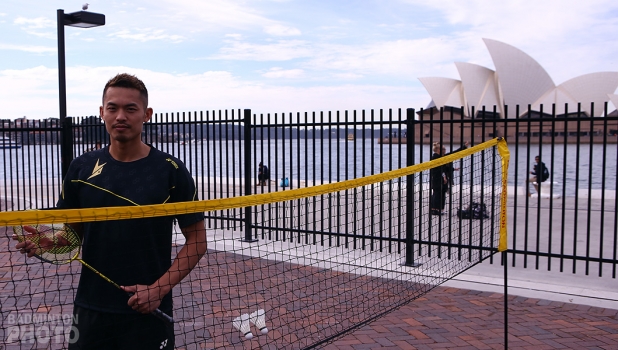
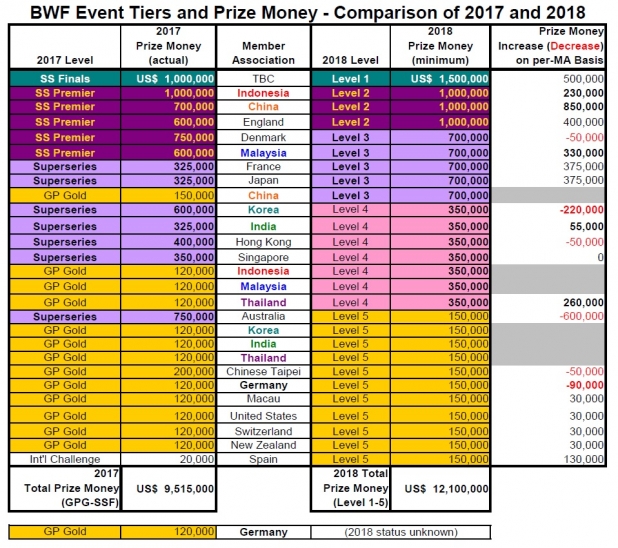
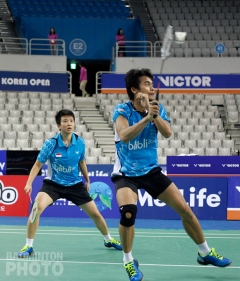
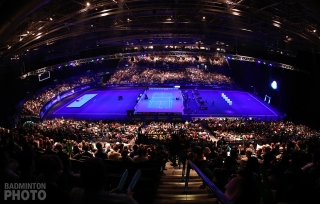
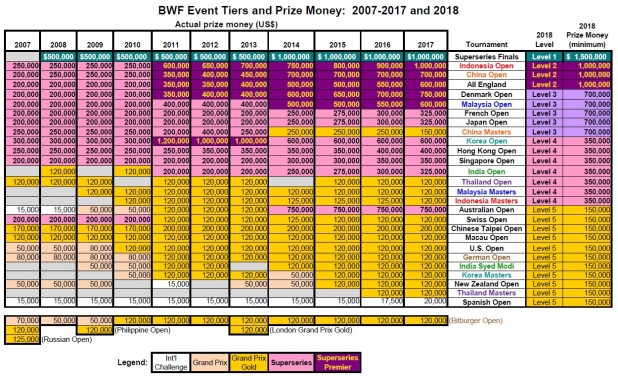

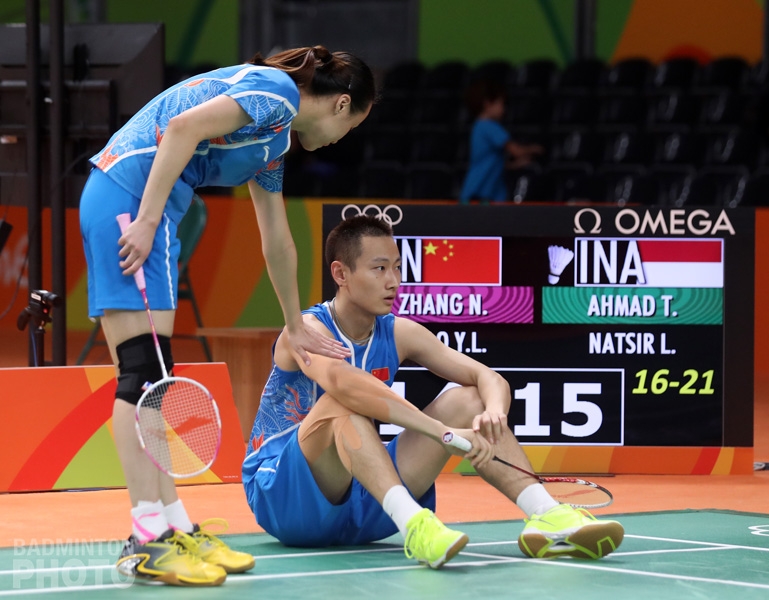
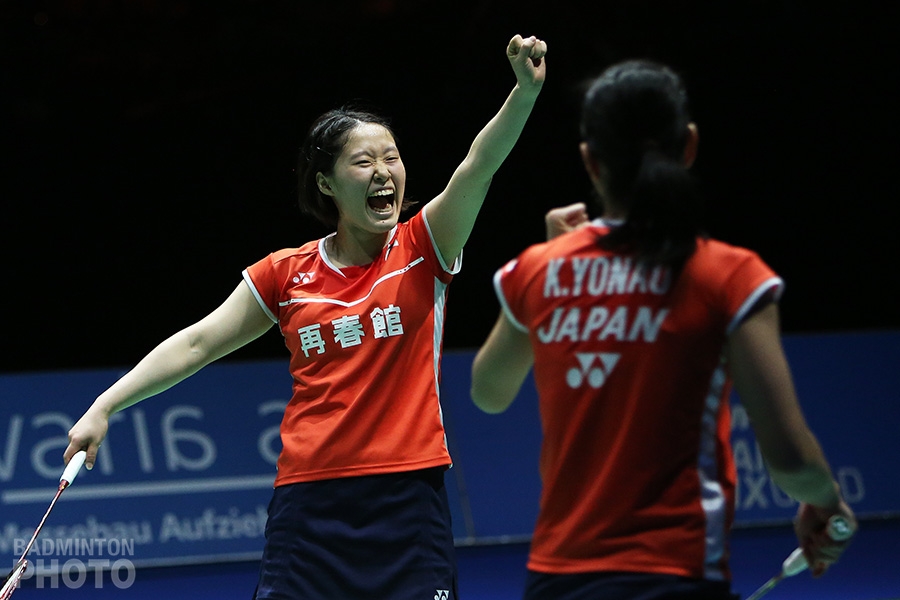

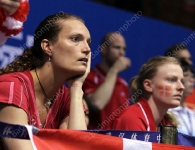
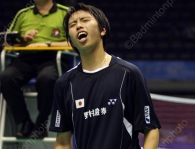

Leave a Reply